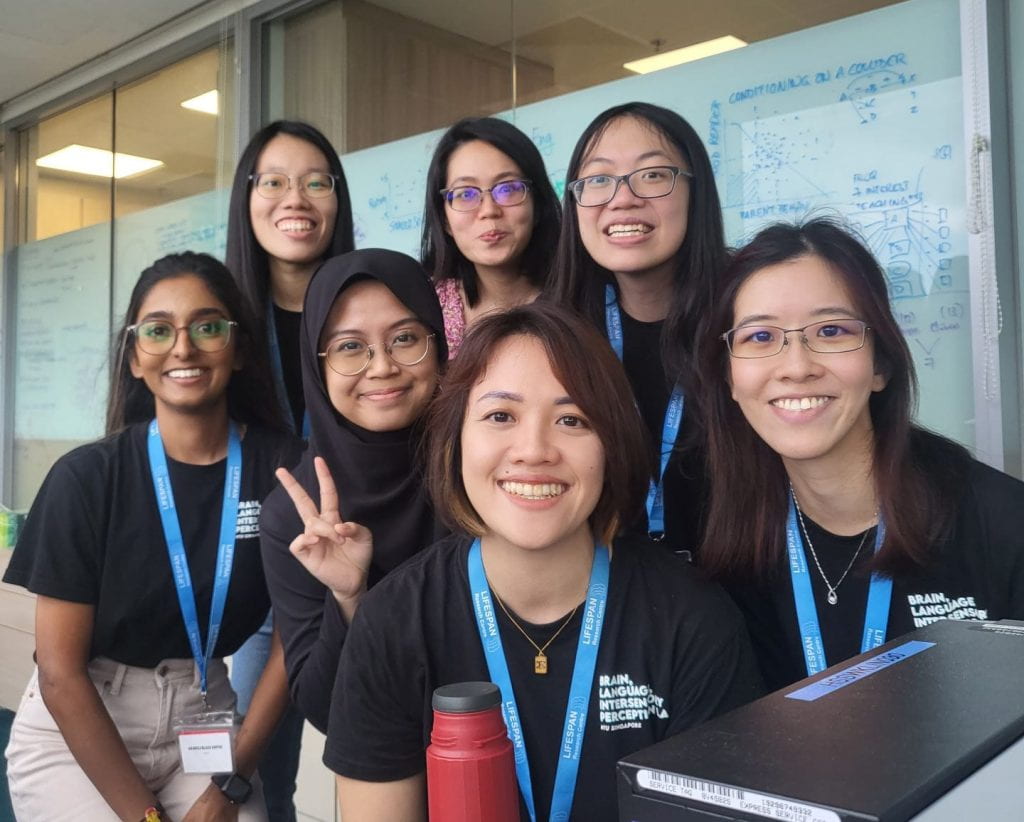Last Saturday, we hosted Our Bilingual Futures event, which was a series of talks and a follow-up Q&A session on the science of raising bilingual children in a multilingual Singapore.
Our lab director, Associate Professor Dr Suzy Styles (NTU), started the event by explaining the shifting language environments of Singaporean households. According to the 2020 Census, there are more young families which indicate that English is the main language they use at home compared to ten years ago. The shift towards more English in the households means that children born to younger Singaporean parents are hearing more English as they grow up. However, the majority of Singaporean parents still use at least two languages with their child.
Dr Suzy Styles also shared the concept of translanguaging and explained that the fluid switching between languages done by Singaporean parents is not unusual or unnatural and that it is not detrimental to a child’s language development.

Dr Beth O’Brien (NIE) then took the stage to explain to parents why reading with young children is a great way to develop their language skills. She provided examples of how parents can create word games for their child to develop phonological awareness.
Finally, Professor Dr Annabel Chen (NTU) explained the neurological processes and brain areas involved when we are reading and how reading with children in various languages activates their brains and promotes language development.
Attendees also received goodie bags and had the opportunity to visit the labs’ booths located outside the auditorium where they learnt about our ongoing studies. We even had a spin-the-wheel game and a lucky draw! Check out these photos from our event:
We’d like to thank everyone for coming to our event! We hope you enjoyed the talks and found the sessions to be informative 🥰
If you were unable to attend the event, fret not! The talks are now available on our YouTube page (to activate English subtitles, activate the CC option):
Dr Suzy Styles: https://youtu.be/WVH8eY2WqHA
Dr Beth O’Brien: https://youtu.be/bd4F3UHkROE
Prof Annabel Chen: https://youtu.be/MtEfDIxkDqc
Q&A session: https://youtu.be/gtDI5N58GNU
Transcripts of Q&A session: PART 1 | PART 2
Watch this space for updates or follow us on Facebook: https://facebook.com/bliplabntu
Follow us on Instagram @bliplabntu!
If you would like to know more about what we do, you can visit https://blogs.ntu.edu.sg/blip/baby.
We’re currently recruiting families with children between birth to 4 years old for our upcoming Baby Talk-a-thon!
If you’re keen to take part, you can register your interest here: https://ntusingapore.qualtrics.com/jfe/form/SV_868i1NIkpvf00QK
Our Bilingual Futures is a collaboration between BLIP Lab NTU, OER Centre for Research in Child Development NIE, and:
CRADLE: https://blogs.ntu.edu.sg/reading/
Clinical brain lab
Website: http://www.clinicalbrain.org/
Twitter: @cblntu
Telegram: https://t.me/clinicalbrainlab
Learning brain lab
Website: https://www.learningbrain.org/
Instagram: @learningbrainlab
This event was funded in part by the National Research Foundation Science of Learning Grant awarded to Dr Suzy Styles.


























